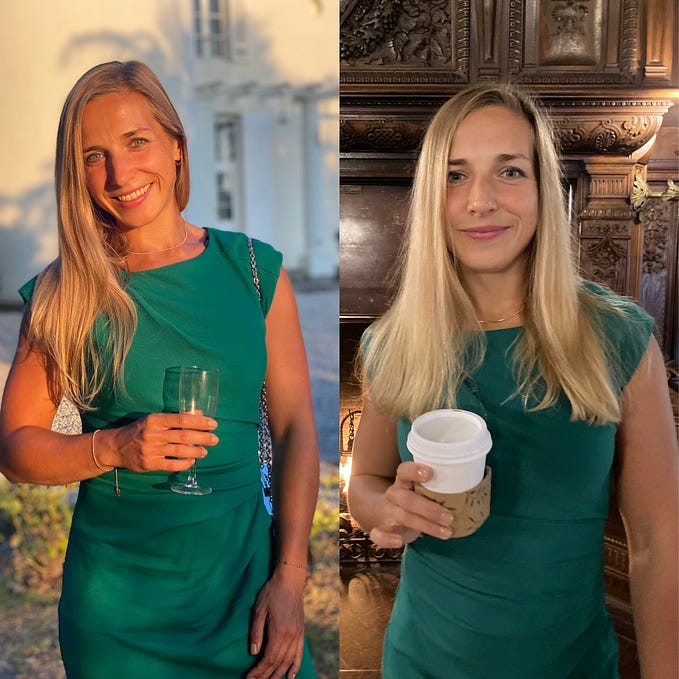Jobim is Alive and Well in Barcelona

If only this were true. Antonio Carlos Jobim, the legendary Brazilian composer and musician who co-invented bossa nova, died in 1994, at the age of 67, from complications following heart surgery. However, Jobim’s music — which celebrates life, love, and nature — continues to inspire singers and musicians to this day. It says much about the lasting impact and influence of his work that subsequent generations of Brazilian musicians — and those elsewhere around the globe — have carried on the genre in the decades since the bossa nova craze peaked in the mid-1960s.

In that sense, Jobim and his music are still very much alive, and have found a somewhat unlikely “home” with Barcelona’s Sant Andreu Jazz Band, created in 2006 by Joan Chamorro, as a means to introduce the city’s young music students to the joys of playing jazz, primarily from legendary American jazz composers, musicians, and big bands, dating between the early 1930s and late ‘50s. The project has since produced a long line of extraordinary young talent. More about them shortly — but first, a bit of history:
Bossa nova (rough translation: new wave), first appeared in Rio de Janeiro the late 1950s, having descended from established South American styles such as samba and salsa. But bossa nova developed as a mellower, more quietly sensual musical relative, replacing harder-edged percussion with a softer beat. The lead instruments most often include a gently-strummed or picked nylon-string classical guitar, piano, and flute or saxophone, with percussion usually created by the use of shakers and soft brushes on the drums. Of course, there are many variations of arrangements, instrument choices, and tempo, but it isn’t difficult to identify true bossa nova upon hearing it, and thus distinguishing it from other branches of its family tree.
The men who can be considered the co-creators of bossa nova were Jobim and singer/guitarist Joao Gilberto. Both lived in Rio — Jobim as an arranger and record producer, Gilberto as a musician in jazz clubs — when they recorded the first-ever bossa nova hit song and album, Chega de Saudade, in 1958.

As a collaborator with lyricist Vinicius de Moraes, Jobim quickly established his reputation as a songwriter of gentle yet compelling melodies. Other hits from these early years that would soon become standards include “One Note Samba,” “Desafinado,” “Corcovado,” and, of course, “The Girl From Ipanema.” You might not know them all by name, but chances are good you’d know them if you heard them.

A compilation album, The Legendary Joao Gilberto, contains all of these original recordings, spanning the years between 1958-’61 (and available on CD). Before long, many other top singers and musicians in Brazil were soon contributing to the genre.

By the early and mid-1960s, young Sergio Mendes had moved to the U.S., bringing bossa nova with him, and continued his recording career with great success.

Several Amercian jazz musicians, including saxophonist Stan Getz, guitarist Charlie Byrd, and singers Ella Fitzgerald and Frank Sinatra, caught wind of bossa nova, and began making their own recordings in the genre, sometimes with Jobim or Gilberto by their side (unfortunately, some high-profile American musicians often failed to give due credit for bossa nova to their innovative Brazilian counterparts).

One of the landmark bossa nova recordings, Getz-Gilberto, was released in March of 1964. American saxophonist Stan Getz worked with Gilberto and Jobim to present a fusion of sorts between the Brazilian bossa nova strains and American “West Coast” jazz. The track listing for that album includes the Jobim classics “Desafinado,” “So Danco Samba,” and two tracks sung by Joao Gilberto’s wife at the time, Astrud; “Corcovado (Quiet Nights of Quiet Stars),” and “The Girl From Ipanema” — which won the 1965 ‘Record of the Year’ Grammy Award.
Ironically, Joao Gilberto had initial reservations about having his wife sing on the album, as she had no prior experience as a singer, and was quite shy. It was Getz and Jobim who argued on Astrud’s behalf, and eventually won the day.
In the decades since the peak of the bossa nova craze — which began to decline in Brazil while still gaining popularity elsewhere — later generations of Brazilian musicians have proudly carried on the tradition. Those in other parts of the world have also done their share to keep the genre alive — not least of whom has been Joan Chamorro, who was especially inspired by the Getz-Gilberto album. “I think it was one of the first discs that united bossa and jazz,” he says, “That album was one of my all-time favorites.”

Chamorro’s love of Jobim’s music, that album, and of bossa nova in general, did not immediately work its way into the Sant Andreu Jazz Band’s repertoire, but the musicians, many of whom have also excelled as singers, felt comfortable with the genre immediately.
“The first was ‘The Waters of March,’” he recalls, “which Alba Armengou and Rita Payes sing, and ‘Wave’ (instrumental played by Max Salgado on the French horn). Joel Frahm played tenor sax on both, as a special guest, and we recorded them in 2015 at the Palau de la Musica [“The Waters of March” appears on the SAJB album Jazzing 6, vol. 1, and “Wave” on Jazzing 6, vol. 2]. But before, we had already recorded some bossa novas in other contexts.”
“The Waters of March,” arguably Jobim’s masterpiece, was written in 1972 (he wrote the music and both the Portuguese and English lyrics himself). As performed by Alba and Rita, they adhere to the Portuguese version recorded by Jobim and singer Elis Regina in ‘74. Joel Frahm confesses to being deeply moved witnessing the girls’ duet in rehearsal (quite evident in the rehearsal video posted on YouTube), as well as their later performance onstage: “I can’t tell you how proud I am of having been asked to play with Joan and all of his marvelous young musicians. This particular performance brings tears to my eyes every single time I’ve heard it. The attention to detail paid by the band and vocalists is second to none. The joy and emotion in tandem with the hard work they’ve put in makes them an ensemble like no other I’ve encountered. Bravo to Joan and all of the musicians that have gone through this band.”
In addition to Jobim songs performed and recorded by the full SAJB ensemble, a number of his compositions appear in various editions of the Joan Chamorro presenta… series of albums, with each release showcasing an individual band musican/vocalist, beginning with Andrea Motis in 2010, and continuing with Eva Fernandez, Magali Datzira, Rita Payes, Alba Armengou, Elia Bastida, Carla Motis, and other SAJB members throughout the band’s fourteen years. The young singers have all embraced the Brazilian style, which fits in especially well for performances and recordings of the smaller SAJB side groups (Alba Armengou has been performing a great deal of Brazilian classics with members of her own quartet, which includes SAJB saxophonist Marcal Perramon).
Violinist/saxophonist Elia Bastida, who has sung on nearly a dozen Brazilian songs with the band, says, “I love singing ‘bossa nova’ and Brazilian music…I didn’t know Jobim before I was with the SAJB, because until then I played only classical music. When I heard this kind of music, I loved it because it’s very cheerful. Although it talks about sad things, it has a component that is different from other kinds of music.” The first Brazilian song she recorded as a solo singer with the SAJB was “Baiao de Quatro Toques,” which she has sung “in a thousand concerts” and still loves it. “I spend many hours listening to the music of Jobim, Joao Gilberto, Elis Regina, Maria Behtana, Rosa Passos…” She has even co-written a song with Joan Chamorro, “Uma Estrela,” for which she wrote the lyrics in Portuguese. “Singing this kind of music for me is very special. The ‘sotaque’ (Brazilian accent) and this language is very lovely to sing, and for me it’s very easy to feel identified with. One of my musical dreams is to be able to go and play music in Brazil.”
Trombonist Rita Payes also holds a special place in her heart for bossa nova. “Singing in Portuguese for me is like, more ‘near’ [intimate] to me than singing in English. It’s simply that I love this music. I love listening to Joao Gilberto, Chico Barque…I love that sound, I love the sound of the language, too. It has a big connection with jazz and the harmonies…It’s beautiful because you can learn both at the same time — you can learn a jazz tune, and the next day you can learn a bossa nova tune, and its kind of the same.”
Chamorro says of Jobim’s music, “It seems to me a wonderful music, whose music is rich melodically and rhythmically. The harmonies are exquisite and special, and combine perfectly with the spirit of jazz to be able to improvise on them. Discovering the music of Brazil and new interpreters is always a great pleasure.”
Once the band had offered its own versions of Jobim’s “Desafinado” and “Corcovado,” as well as “Doralice” (written by Antônio Almeida and Dorival Caymmi), Chamorro had the idea to record all of the tracks that appear on the Getz-Gilberto album — which he has done, albeit at different times and in different settings, rather than during one single concert or recording.
Other Brazilian composers and singers further inspired the SAJB to expand that repertoire in their performances. “As the girls got to know the music of Brazil,” Chamorro says, “they went on proposing songs. We knew Elis Regina, Lara Leao, Rosa Pasos, etc.”
Andrea Motis also became enamored of Jobim and the bossa nova genre, recording Chega de Saudade on her first album with Chamorro (when she was 15), and performing it often in concert with her quintet.
She has recorded other Jobim songs as well, and her 2018 album Do Outro Lado Do Azul (The Other Side of the Blue), honors Brazilian composers other than Jobim, and includes a few of her own original compositions in that style.
With the long delay from recording and performing due to the Coronavirus pandemic over, more Brazilian songs are planned to be a part of the band’s third La Magia de la Veu (The Magic of the Voice) album, which, like its predecessors, will showcase the young female singers who have been largely responsible for drawing the attention of countless jazz fans around the world to the SAJB. Beyond that, Chamorro hints of a project that he would like to see to completion in the not-too-distant future: “My idea is to record an entire album of music from Brazil, maybe next year. Maybe everything dedicated to Jobim …. well … this is another dream.”

It’s a dream he would do well to pursue; the combination of Jobim’s elegant music and the SAJB’s youthful energy and skills would no doubt have devotees of both musical forces rejoicing for years to come.
Until next time…
Read my previous articles about the Sant Andreu Jazz Band at the links below, and at the “Garry’s Blog” page on my website, www.GarryBerman.com.
“How a Kids Band in Barcelona Rekindled My Love of Jazz” https://garryberman.medium.com/how-a-kids-band-in-barcelona-rekindled-my-love-of-jazz-a20ea8873670
“Joan Domenech’s New Chapter as a Jazz Musician” https://garryberman.medium.com/jan-domenechs-new-chapter-as-a-jazz-musician-e1f0da8b19b9
“Joan Chamorro and the SAJB: Past, Present, and Future” https://medium.com/@garryberman/joan-chamorro-and-the-sajb-past-present-and-future-573eedcbff76
“Josep Traver: Guitarist of All Trades” https://garryberman.medium.com/josep-traver-guitarist-of-all-trades-608296f9d00a
“When American Jazz Pros Meet Spanish Jazz Kids” https://garryberman.medium.com/when-american-jazz-pros-meet-spanish-jazz-kids-25c7f5023571
“Claudia Rostey: The Life of an 18-year-old Bacelona Jazz Trombonist” https://garryberman.medium.com/claudia-rostey-the-life-of-an-18-year-old-barcelona-jazz-trombonist-d13b82c770a3
“The Magic of the Voice: The Singers of the Sant Andreu Jazz Band” https://garryberman.medium.com/the-magic-of-the-voice-the-singers-of-the-sant-andreu-jazz-band-208dfb629221
“Did Someone Say Anastasia Ivanova?” https://garryberman.medium.com/did-someone-say-anastasia-ivanova-dd6f67277c64
“Struck by (musical) Lightning” https://garryberman.medium.com/struck-by-musical-lightning-6583ecb0de13
Sant Andreu Jazz Band CDs are available at: https://jazztojazz.com/ , eBay, and Amazon.com.
Please click the “follow” button and follow me on Medium (no charge) for more articles on popular culture, music, films, television, entertainment history, and just plain old history.
You can also visit www.GarryBerman.com to read synopses and reviews of my books, and order them via the links to Amazon.com.








